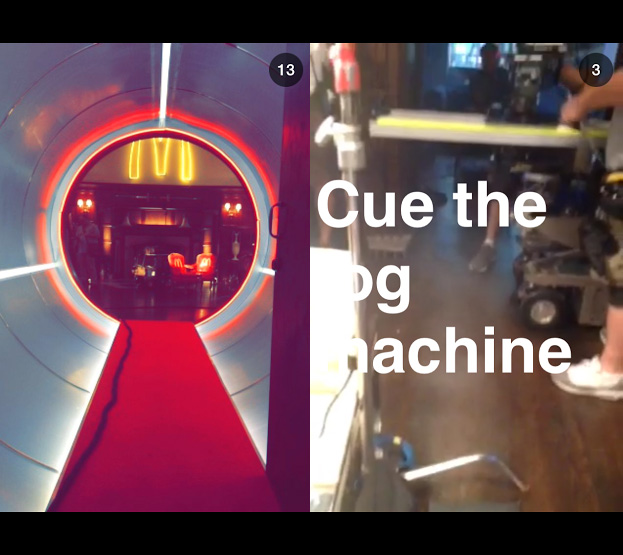
The latest brand to join the ephemeral messaging service, Snapchat, is none other than fast food giant, McDonald’s. In signing on, the burger chain joins a growing list of companies like Taco Bell, American Apparel, Juicy Couture, and even Bloomberg’s Businessweek.
Are you following the action on @Snapchat? Add us! Username: mcdonalds
— McDonald’s (@McDonalds) February 25, 2014
Snapchat boasts more than 350 million active users, makes sense for brands looking to go after the young mobile demographic — an estimated 77 percent of its college-aged users use the app daily. Although the platform doesn’t have basic tracking tools or a concrete way for brands to measure engagement yet, some brands have found the app useful for revealing sneak peeks to users. Juicy Couture, for example, sent out snaps of their spring campaign.
One of McDonald’s first Snapchats looked like a mix of shots through a PlayPlace tunnel and behind-the-scenes footage of a filmset. Hand scrawled text throughout the chat reads, “Best of the best!” Keep trying, guys.

“In this initial mode, we’ve gotten several thousand followers in a couple days,” Rick Wion, director of social media for McDonald’s, told Mashable recently. “We think it’s a good sign that this has long term viability.” McDonald’s currently has 2,200,000 followers on Twitter, and more than 30,000,000 on Facebook.
Digiday reached out to McDonald’s for comment on their plans for Snapchat, but has yet to receive a response.
More in Marketing

Pandora is betting on AI agents to scale service and emotional selling during the peak holiday season
Pandora is using AI agents to scale customer service and replicate emotional in-store selling online, just as peak season puts pressure on margins and teams.

Rembrand’s CEO wants to grow virtual ad placements in streaming, and he’s looking elsewhere for models
Omar Tawakol wants to improve advertising within the streaming world, and is working with advertisers and publishers to improve that experience.

Marketers are keen to use generative AI in ad campaigns, but hidden costs lurk
Marketers across the industry want to use AI to cut down on time spent in creative production. It’s not so simple in practice.





